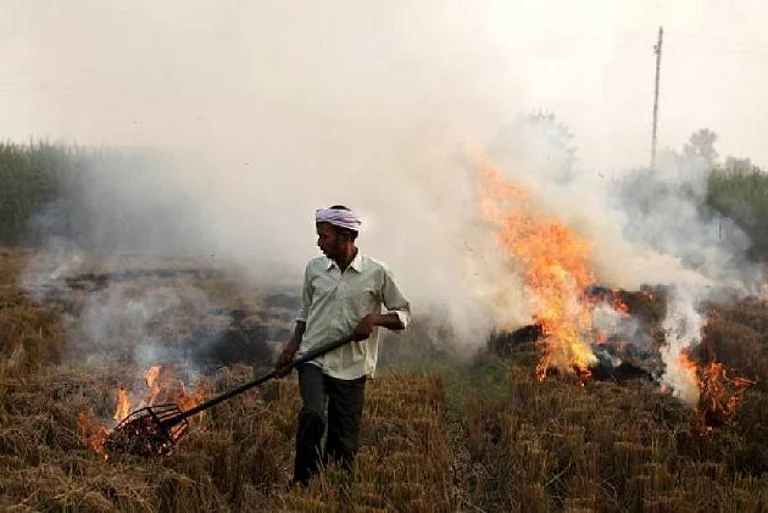On March 12, a balmy spring evening in Delhi, First Food: Future of Taste published by the Centre for Science and Environment (CSE), was released at the India Habitat Centre. This well-produced and deeply researched book has over a hundred recipes, all featuring locally sourced ingredients. It is a fitting tribute to India’s incredible biodiversity and indigenous food culture. Conceptualised by Vibha Varshney, this is the fourth title to be published under CSE’s ‘First Food’ series. The food featured in Future of Taste come with the promise of helping us survive—and live healthier lives—in a world that is facing extreme weather events and other dire threats due to climate change.
On stage at the launch were four of India’s top chefs, who have contributed recipes to the book: Manjit S Gill (Founder-President, Indian Federation of Culinary Associations), Manish Mehrotra (Culinary Director, Indian Accent), Rajiv Malhotra (Corporate Chef, Habitat World) and Jatin Mallick (Chef and co-owner, Tres Restaurant). Introducing the book to the audience, Sunita Narain, well-known environmentalist and Director General, CSE, stressed the need to be mindful of our food choices. “Climate change is breaking our farmers’ backs,” said Narain. “Today, there’s one extreme weather event daily that they have to grapple with. Industrial food farming adds to greenhouse gas emissions and wrecks the environment that is already under huge stress.” Future of Taste endorses resilient crops like millets that is water prudent and can be cultivated with minimal inputs from farmers; faba beans; lesser-known gourds like chow-chow; leaves and flowers such as bathua and gulmohar blooms that are commonly used in local recipes. These are all beneficial for farmers, the environment, and those who consume them.
Future of Taste shines the spotlight on several indigenous food items that have been neglected by a majority of Indians over the years. “There is an existing class structure of food in our country,” said Narain. “We want to change it by sharing information about the variety of wild, native foodstuffs available across India.” Anyone who is curious about the vital links between food, livelihood, and nature will find a wealth of information here. The urgent need to reset these links as the “world begins to rework the paradigm of agriculture so that it is climate-smart” is highlighted.
Readers have a gamut of dishes to choose from: full meals, breakfast and snacks, chutneys and pickles, desserts, and beverages. A sampling: for breakfast, there’s bathua stuffed paratha, karela leaf pakora, and bakla dal pancake. Full meals include green roti, moong dal with yaipan, kulfey ki kadhi, jimikhand kofta, ullsoppu sambhar, carrot leaf kadhi; chutneys made from jalpai, jamun jam, and Naga tree tomato chutney. The drinks menu sizzles with enticing beverages such as khus ki sharbat, kaitha rasam and sabja lemonade. These are simple, healthy recipes and the ingredients they list are all found in India—either in the wild or in the fields. Nothing exotic, or overpriced, about them!
“We chefs decided to contribute some of our recipes to Future of Taste because it is crucial to share the right kind of information about locally sourced food and India’s culture of food,” says Chef Gill. “Good, clean, fairly produced food is the right choice for all of us in the time of climate change. This book articulates that message very well and we are glad to be part of it.” The chefs whose recipes are featured in the book are offering some of these dishes to customers who visit their restaurants. They are keen to cater to the growing tribe of people in India who are in search of healthy, locally sourced food items.
The essays included in Future of Taste, written by experts, raises awareness about climate change. The topics they cover include the vanishing native fishes of the Sundarbans, wild foods of the Western Ghats, traditional food items of the Himalayan region, native food varieties of Nandurbar—the most climate-change vulnerable district in Maharashtra, and Meghalaya’s indigenous communities who are at acute risk from climate change impacts. The environment-friendly way of life of indigenous communities and their traditional farming practices find a mention here. Though affected by climate change, the rich agro-biodiversity (diversity of plants and animals used as food) found in local communities has cushioned them from damage to a certain extent. They have experimented with seeds which can be stored for long periods and plants with short life cycles, and also fashioned nutritious recipes out of parts of cultivated plants that are usually wasted.



























